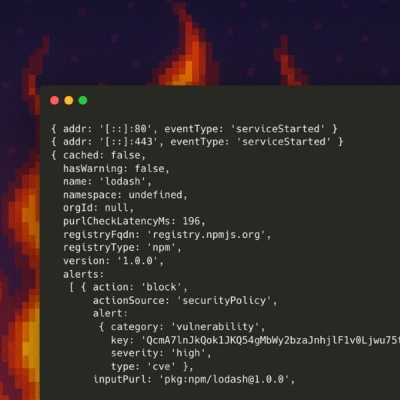🎉 Mock Config Server
tool that easily and quickly imitates server operation, create full fake api in few steps
Install
Install with npm or yarn
$ npm i mock-config-server --save --dev
$ yarn add mock-config-server --dev
🦉 Philosophy
🎉 Mock Config Server it is a tool that, easily, quickly simulates the work of a server. The main difference from solutions such as json-server and mock-service-worker is the ease of filling in data and flexible emulation of any and usual cases. Our goal is to create a simple and flexible system for users, with the help of which they can create, test, and support their products.
Features
- TypeScript support out of the box - full typed package
- Full Rest Api support - using simple configs of a certain format, you can easily simulate the operation of servers
- CORS setup - turn on and off CORS, fully customizable when CORS is turned on
- Support for any kind of static - server can return any type of static file if needed. Images, HTML, CSS, JSON, etc
Usage
Install 🎉 Mock Config Server with npm or yarn
$ npm i mock-server --save --dev
$ yarn add mock-server --dev
Create a mock-server.config.js file with server configuration
const mockServerConfig: Mock.ServerConfig = {
configs: [
{
path: '/user',
method: 'get',
routes: [{ data: { emoji: '🦁', name: 'Nursultan' } }]
}
]
};
module.exports = mockServerConfig;
Start 🎉 Mock Config Server
$ mock-config-server
🎭 Parameters for mock-server.config.(js|ts)
configs {Array} configs for mock requests, readstaticPath? {StaticPath} entity for working with static files, readinterceptors? {Interceptors} functions to change request or response parameters, readcors? {Cors} CORS settings object (default: CORS is turn off), readport? {number} server port (default: 31299)baseUrl? {string} part of the url that will be substituted at the beginning of the request url (default: '/')
Configs
Configs are the fundamental part of the mock server. These configs are easy to fill and maintain. Config entities is an object with which you can emulate various application behaviors. You can specify headers | query | params | body to define what contract data you need to get. Using this mechanism, you can easily simulate the operation of the server and emulate various cases
request config
path {string | RegExp} request pathmethod {GET | POST | DELETE | PUT | PATCH} rest api methodroutes {RouteConfig} request routesinterceptors? {Interceptors} functions to change request or response parameters, read
route config
data {any} mock data of requestentities? Object<headers | query | params | body> object that helps in data retrievalinterceptors? {Interceptors} functions to change request or response parameters, read
entities
interface Entities {
headers?: { [string]: string | number };
query?: { [string]: string | number };
params?: { [string]: string | number };
body?: any;
}
Example
const mockServerConfig = {
configs: [
{
path: '/user',
method: 'get',
routes: [
{
entities: {
headers: { 'name-header': 'Nursultan' }
},
data: { emoji: '🦁', name: 'Nursultan' }
},
{
entities: {
headers: { 'name-header': 'Dmitriy' }
},
data: { emoji: '☄', name: 'Dmitriy' }
}
]
}
]
};
module.exports = mockServerConfig;
Now you can make a request with an additional header and get the desired result
fetch('http://localhost:31299/user', {
headers: { 'name-header': 'Nursultan' }
})
.then((response) => response.json())
.then((data) => console.log(data));
Static Path
Entity for connecting statics to the server, like HTML, JSON, PNG, etc.
string path to your static filesObject<{prefix, path}
prefix {string} path prefix for requestpath {string} path to your static files
Array<string | Object<{prefix, path}>>
Cors
Object with settings for CORS. You can flexibly configure the required origin, methods, headers, credentials, maxAge for the entire server. If you do not specify CORS settings, then it will be disabled.
origin {string | RegExp | Array<string | RegExp> | Function | Promise } available origins from which requests can be mademethods? {Array<GET | POST | DELETE | PUT | PATCH>} available methods (default: *)headers? {Array} available methods (default: *)credentials? {boolean} param tells browsers whether to expose the response to the frontend JavaScript code (default: true)maxAge? {number} how long the results can be cached (default: 3600)
Interceptors
Functions to change request or response parameters
request? (params) => voidresponse? (data, params) => any
Request
Response
data {any} mock data of requestparams
request request objectresponse response objectsetDelay (delay) => Promise
delay {number} seconds of delay time
setStatusCode (statusCode) => void
statusCode {number} status code for response
✨ Contributors



